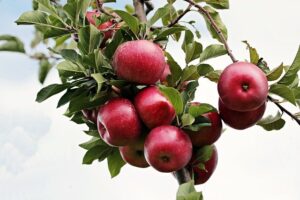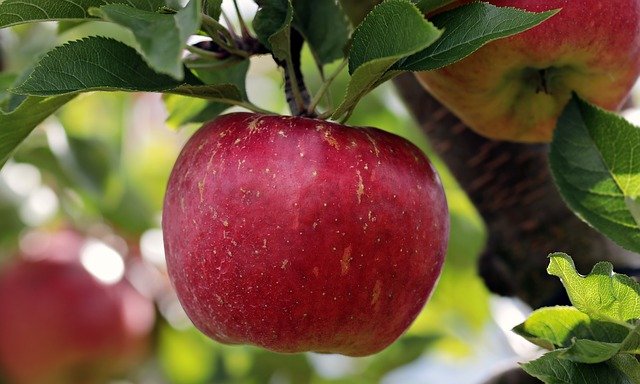Table of Contents
Introduction
When you think about apples, the first thing that comes to mind is why apples are red and the taste they bring to your mouth. Red apples are what come to mind at the mention of apples for most individuals in the world. This means that red apples are the most common cultivars in the world.
While there are other apples in different colors (green, pink), red apples are quite outstanding. The color pops against other green plantations around, making them noticeable. Additionally, red makes the apples look delicious and edible, which is why most people prefer going for red-colored apples on the market. However, have you ever asked yourself why apples are red? If yes, we have the answers for you in this article.

Why are Apples Red?
· Survival in the Wild
First, let’s look at it from a survival-in-the-wild point of view. Apples mainly grow in the wild. Since humans are not around to facilitate their growth, they have to be noticed by the immediate surrounding animals that would. So, apples are red to become more noticeable by wild animals to be eaten and circulate the seeds.
Once the wild animals eat the apples, the seeds don’t usually get digested. As such, the seeds are built to survive the stomach acid and then passed out as excrement. The moment the seeds are passed out to a different place, they begin to grow, propagating other apple species. Doing so ensures survival in the wild as they don’t get extinct because they are no one to facilitate their cultivation in the wild.
That is one of the reasons apples are red. And mostly, the red color appeals to humans. This explains why red apples are common as many people opt to cultivate red apples.
· Anthocyanins
For a more technical explanation, apples are red because they contain anthocyanins, a coloring pigment in fruits and other plantations. The pigment does not, however, stick to one color as you may have noticed “cyan” in the word. This means that the colors vary from red to blue, passing through black and purple, making it the most adaptable pigment in all plantations. Red fruits that get their color from anthocyanin are often portraying hints of blue or cool-toned reds. That is why most red apples have a deep red color as a result of the color variation in anthocyanins.
Factors that affect Anthocyanin Development
For the anthocyanins to thrive, there need to be sugars. Sugars come about on exposure to sunlight and optimum temperature.
· Sunlight
As apples advance from tiny fruits to full-grown apples, sugars also develop in their structure. The sugars help with the development of anthocyanins in the apples. This means that with increased sugars in the apples, the pigment develops and thrives. When exposed to sunlight, the natural sugars develop and increase in the apples to activate the pigment. As such, the topmost foliage of apple trees is prune as the season ends to let the sunlight through.
· Temperature
Temperature also affects the color development of apples. According to research and observation, warmer days and cooler nights make the perfect temperature for anthocyanins to thrive. This is because the temperature is optimal for the development of sugars in the apples, hence producing deep red apple peels.
Bottom Line
We can go on and on about the red color of apples, but one thing stays clear, red apples are as delicious as they are attractive. Red apples come about due to anthocyanins present in their structure. This is a pigment that mostly gives the fruit a deep color as it features a color variation. That explains why apples are red.
